Saswata Sahoo
Dynamic User Segmentation and Usage Profiling
May 27, 2023Abstract:Usage data of a group of users distributed across a number of categories, such as songs, movies, webpages, links, regular household products, mobile apps, games, etc. can be ultra-high dimensional and massive in size. More often this kind of data is categorical and sparse in nature making it even more difficult to interpret any underlying hidden patterns such as clusters of users. However, if this information can be estimated accurately, it will have huge impacts in different business areas such as user recommendations for apps, songs, movies, and other similar products, health analytics using electronic health record (EHR) data, and driver profiling for insurance premium estimation or fleet management. In this work, we propose a clustering strategy of such categorical big data, utilizing the hidden sparsity of the dataset. Most traditional clustering methods fail to give proper clusters for such data and end up giving one big cluster with small clusters around it irrespective of the true structure of the data clusters. We propose a feature transformation, which maps the binary-valued usage vector to a lower dimensional continuous feature space in terms of groups of usage categories, termed as covariate classes. The lower dimensional feature representations in terms of covariate classes can be used for clustering. We implemented the proposed strategy and applied it to a large sized very high-dimensional song playlist dataset for the performance validation. The results are impressive as we achieved similar-sized user clusters with minimal between-cluster overlap in the feature space (8%) on average). As the proposed strategy has a very generic framework, it can be utilized as the analytic engine of many of the above-mentioned business use cases allowing an intelligent and dynamic personal recommendation system or a support system for smart business decision-making.
FairMixRep : Self-supervised Robust Representation Learning for Heterogeneous Data with Fairness constraints
Oct 14, 2020


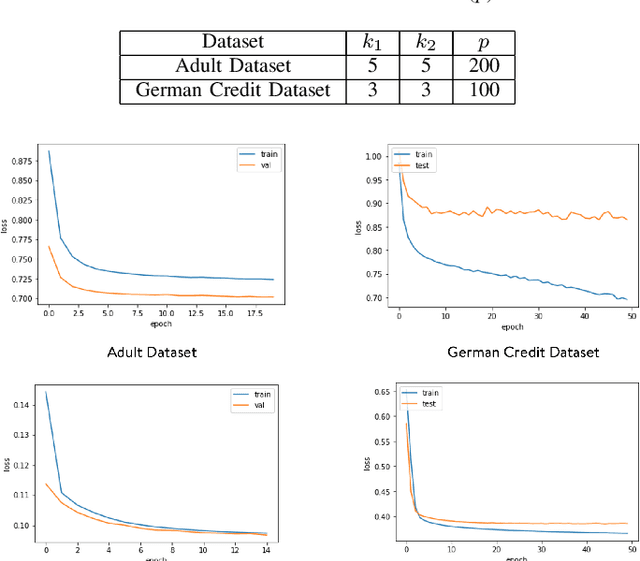
Abstract:Representation Learning in a heterogeneous space with mixed variables of numerical and categorical types has interesting challenges due to its complex feature manifold. Moreover, feature learning in an unsupervised setup, without class labels and a suitable learning loss function, adds to the problem complexity. Further, the learned representation and subsequent predictions should not reflect discriminatory behavior towards certain sensitive groups or attributes. The proposed feature map should preserve maximum variations present in the data and needs to be fair with respect to the sensitive variables. We propose, in the first phase of our work, an efficient encoder-decoder framework to capture the mixed-domain information. The second phase of our work focuses on de-biasing the mixed space representations by adding relevant fairness constraints. This ensures minimal information loss between the representations before and after the fairness-preserving projections. Both the information content and the fairness aspect of the final representation learned has been validated through several metrics where it shows excellent performance. Our work (FairMixRep) addresses the problem of Mixed Space Fair Representation learning from an unsupervised perspective and learns a Universal representation that is timely, unique, and a novel research contribution.
Learning Representation for Mixed Data Types with a Nonlinear Deep Encoder-Decoder Framework
Sep 21, 2020



Abstract:Representation of data on mixed variables, numerical and categorical types to get suitable feature map is a challenging task as important information lies in a complex non-linear manifold. The feature transformation should be able to incorporate marginal information of the individual variables and complex cross-dependence structure among the mixed type of variables simultaneously. In this work, we propose a novel nonlinear Deep Encoder-Decoder framework to capture the cross-domain information for mixed data types. The hidden layers of the network connect the two types of variables through various non-linear transformations to give latent feature maps. We encode the information on the numerical variables in a number of hidden nonlinear units. We use these units to recreate categorical variables through further nonlinear transformations. A separate and similar network is developed switching the roles of the numerical and categorical variables. The hidden representational units are stacked one next to the others and transformed into a common space using a locality preserving projection. The derived feature maps are used to explore the clusters in the data. Various standard datasets are investigated to show nearly the state of the art performance in clustering using the feature maps with simple K-means clustering.
Graph Spectral Feature Learning for Mixed Data of Categorical and Numerical Type
May 06, 2020



Abstract:Feature learning in the presence of a mixed type of variables, numerical and categorical types, is an important issue for related modeling problems. For simple neighborhood queries under mixed data space, standard practice is to consider numerical and categorical variables separately and combining them based on some suitable distance functions. Alternatives, such as Kernel learning or Principal Component do not explicitly consider the inter-dependence structure among the mixed type of variables. In this work, we propose a novel strategy to explicitly model the probabilistic dependence structure among the mixed type of variables by an undirected graph. Spectral decomposition of the graph Laplacian provides the desired feature transformation. The Eigen spectrum of the transformed feature space shows increased separability and more prominent clusterability among the observations. The main novelty of our paper lies in capturing interactions of the mixed feature type in an unsupervised framework using a graphical model. We numerically validate the implications of the feature learning strategy
Semi-Bagging Based Deep Neural Architecture to Extract Text from High Entropy Images
Jul 02, 2019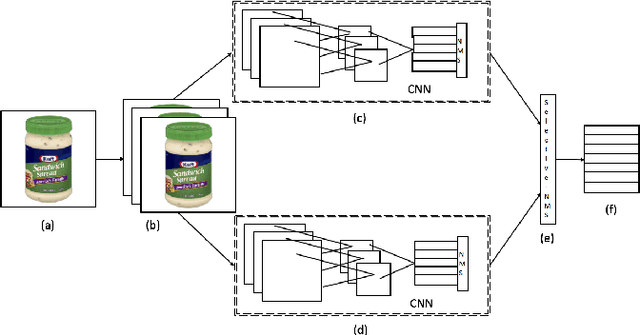
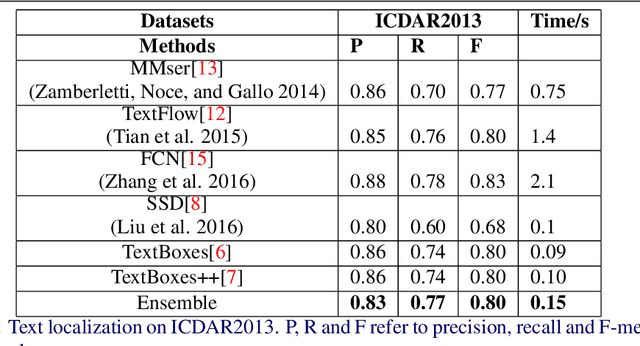
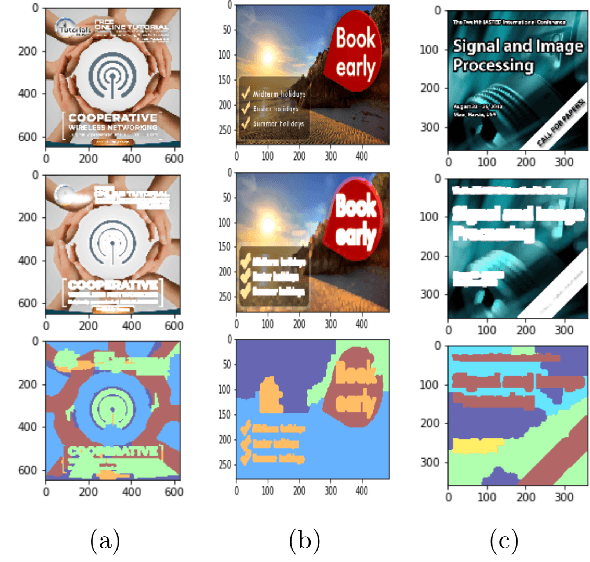
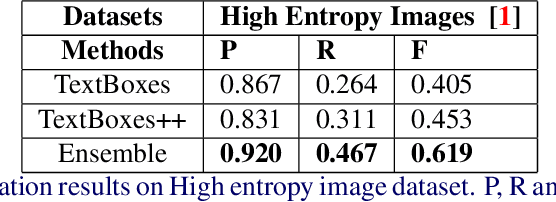
Abstract:Extracting texts of various size and shape from images containing multiple objects is an important problem in many contexts, especially, in connection to e-commerce, augmented reality assistance system in natural scene, etc. The existing works (based on only CNN) often perform sub-optimally when the image contains regions of high entropy having multiple objects. This paper presents an end-to-end text detection strategy combining a segmentation algorithm and an ensemble of multiple text detectors of different types to detect text in every individual image segments independently. The proposed strategy involves a super-pixel based image segmenter which splits an image into multiple regions. A convolutional deep neural architecture is developed which works on each of the segments and detects texts of multiple shapes, sizes, and structures. It outperforms the competing methods in terms of coverage in detecting texts in images especially the ones where the text of various types and sizes are compacted in a small region along with various other objects. Furthermore, the proposed text detection method along with a text recognizer outperforms the existing state-of-the-art approaches in extracting text from high entropy images. We validate the results on a dataset consisting of product images on an e-commerce website.
 Add to Chrome
Add to Chrome Add to Firefox
Add to Firefox Add to Edge
Add to Edge